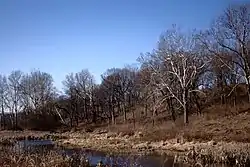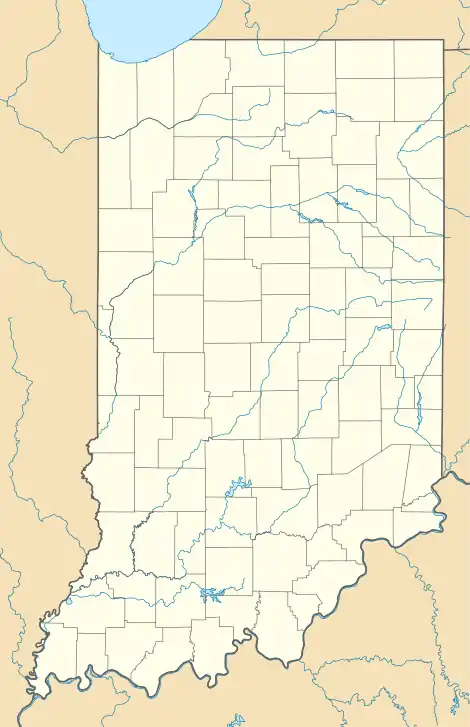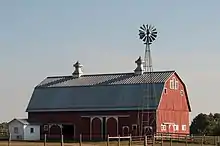Prophetstown State Park
Prophetstown State Park commemorates a Native American village founded in 1808 by Shawnee leaders Tecumseh and his brother Tenskwatawa north of present-day Lafayette, Indiana, which grew into a large, multi-tribal community. The park features an open-air museum at Prophetstown, with living history exhibits including a Shawnee village and a 1920s-era farmstead. Battle Ground, Indiana, is a village about a mile east of the site of the Battle of Tippecanoe in 1811, a crucial battle in Tecumseh's War which ultimately led to the demise of Prophetstown. The state park was established in 2004 and receives about 335,000 visitors annually.[1]
| Prophetstown | |
|---|---|
 Prophetstown State Park, January 2012 | |
 Location of Prophetstown State Park in Indiana  Prophetstown State Park (the United States) | |
| Type | State Park |
| Location | Tippecanoe County, Indiana, United States |
| Nearest city | Battle Ground, Indiana |
| Coordinates | 40°30′0″N 86°50′0″W |
| Area | 2,000 acres (810 ha) |
| Created | 2004 |
| Operated by | Indiana Department of Natural Resources |
| Visitors | 334,375 (in 2018–2019)[1] |
| Website | Official Website |
History
The park was first proposed in 1989 but did not receive funding from the Indiana legislature until 1994. Land acquisition continued through 1999 when the legislature funded $3.7 million to create the park. Indiana Governor Joe Kernan formally dedicated the park in 2004. The campground opened the following year and was a partnership with Lafayette as part of the Lafayette Inn tax proceeds.[2] Construction of the aquatic park began in October 2012 and was completed in 2013 after lobbying by local officials to drive more visitors to the park and Tippecanoe County.[3]
The Farm at Prophetstown is a non-profit organization that rents approximately 125 acres (51 ha) from the Indiana Department of Natural Resources to show farming life as it was in the 1920s.
Facilities and activities

- Historic Prophetstown farmstead, a 1920s living history farm.
- Woodland Indian settlement with replicas of a Shawnee council house and medicine lodge
- Hiking trail (2.75 miles (4.43 km))
- Bicycle trail (2.4 miles (3.9 km))
- Interpretative naturalist services
- Picnic areas and shelters
- Camping, with 110 campsites and a dumping station
References
- "2018 / 2019 Estimated Fiscal Year Visits for Indiana State Parks ~ Alphabetical" (PDF). Indiana Department of Natural Resources. Retrieved November 2, 2021.
- Poston, Heather (June 25, 2003). "Prophetstown park receives funds, promises activities for all Hoosiers". Purdue Exponent. Purdue Exponent. Retrieved September 1, 2014.
- "State Park Timeline". Journal and Courier. Lafayette (IN) Journal and Courier. June 15, 2013. Retrieved August 31, 2014.